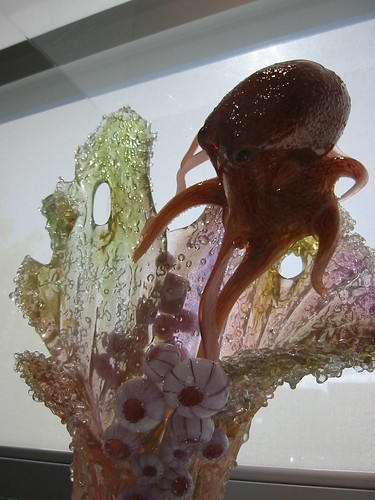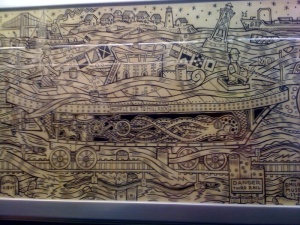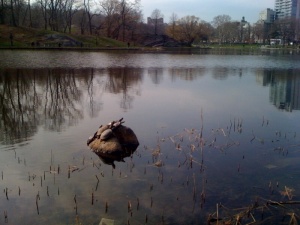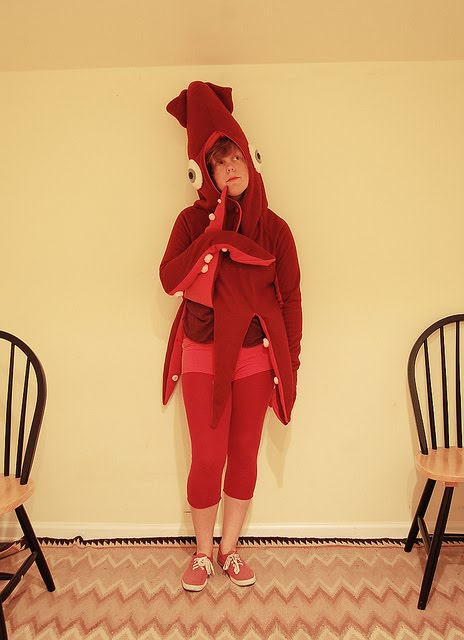When I was in Seattle over Memorial Day weekend, I went to Tacoma for an afternoon of beer, wildlife viewing (seals and bald eagles! In an urban park!), and glass. I love Tacoma’s Museum of Glass. The first time I was there, quite a few years ago, there was a glass octopus!
This time, there was an exhibition called Kids Design Glass. The idea is that perfectly simple kind of genius: kids make a drawing on paper and glass artists render that into a sculpture. Between the drawings, titles, and artist statements by the kids, it was absolutely laugh-out-loud funny. Apart from just being funny, it was also incredibly imaginative, exuberant, occasionally touching and sad, and beautiful. If you have a chance to get to the museum before the exhibition closes, I really really recommend it.
There were several repeating motifs in the sculptures: dinosaurs figured in several sculptures, as did pickles (?), and mollusks! One of them is a pickle/mollusk combo. Here’s the sculpture:
Sorry it’s blurry, but this is the Pickle Buck, who lives on an island called Lava Squid and has “squids strapped so it can go.” Here’s the sculpture:
I love the multicolor glass on those squid.
The other one was the Octopussy. Keep your giggles to yourself; this is a family exhbition. Here’s the drawing:

Evil octopus! And the sculpture:
Hm, five tentacles? We’ll chalk that up to imagination!
There’s a flickr set of the making of one of the (non-mollusk related) pieces. Check it out!




























